# Objective
I found several words in code and docs are incorrect. This should be fixed.
## Solution
- Fix several minor typos
Co-authored-by: Chris Ohk <utilforever@gmail.com>
# Objective
Prevent things from breaking tomorrow when rust 1.67 is released.
## Solution
Fix a few `uninlined_format_args` lints in recently introduced code.
# Objective
Fixes#6952
## Solution
- Request WGPU capabilities `SAMPLED_TEXTURE_AND_STORAGE_BUFFER_ARRAY_NON_UNIFORM_INDEXING`, `SAMPLER_NON_UNIFORM_INDEXING` and `UNIFORM_BUFFER_AND_STORAGE_TEXTURE_ARRAY_NON_UNIFORM_INDEXING` when corresponding features are enabled.
- Add an example (`shaders/texture_binding_array`) illustrating (and testing) the use of non-uniform indexed textures and samplers.
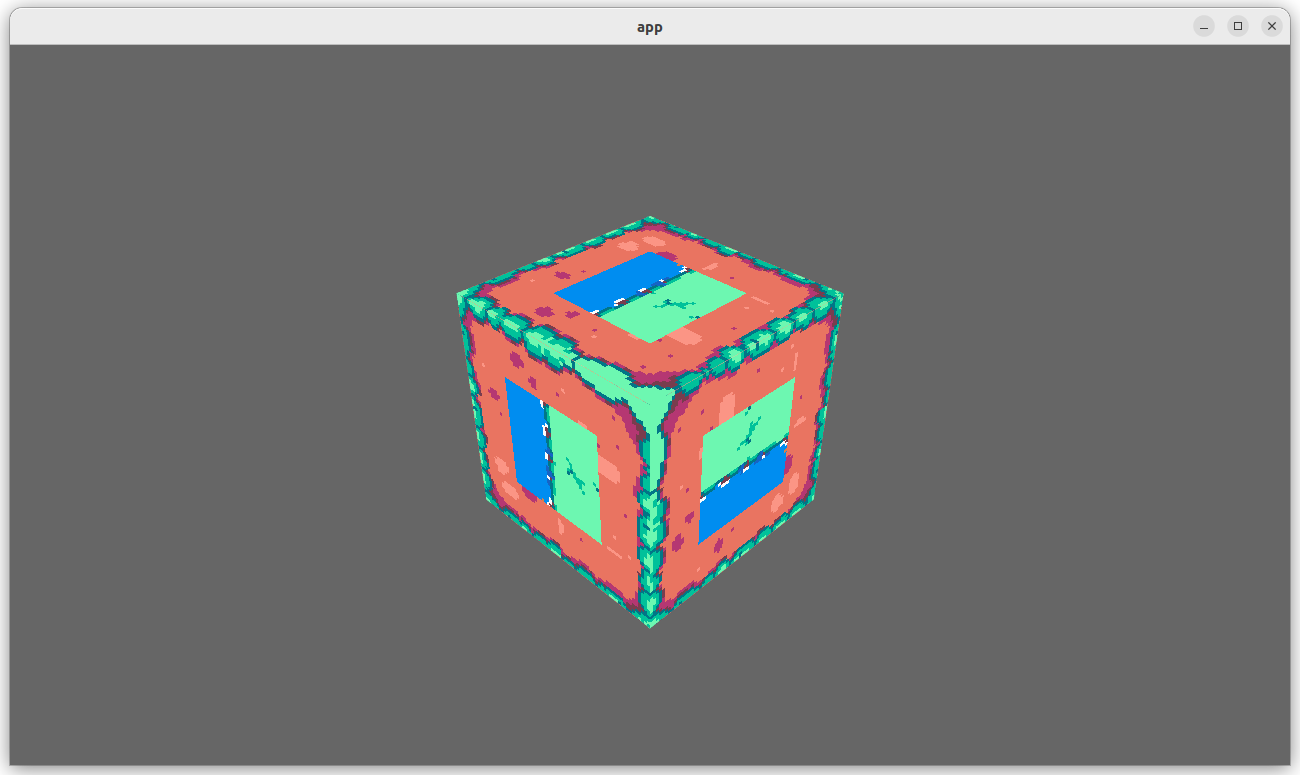
## Changelog
- Added new capabilities for shader validation.
- Added example `shaders/texture_binding_array`.
Co-authored-by: Robert Swain <robert.swain@gmail.com>
# Objective
Implements cascaded shadow maps for directional lights, which produces better quality shadows without needing excessively large shadow maps.
Fixes#3629
Before
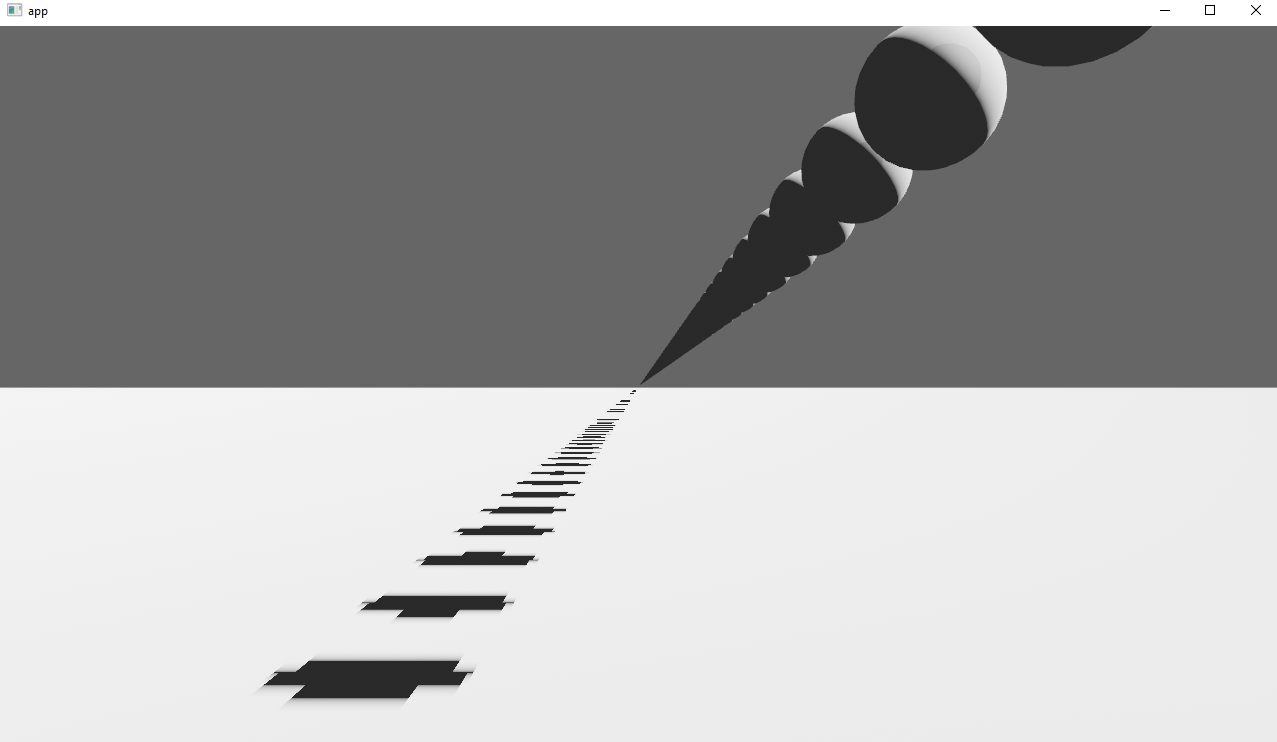
After
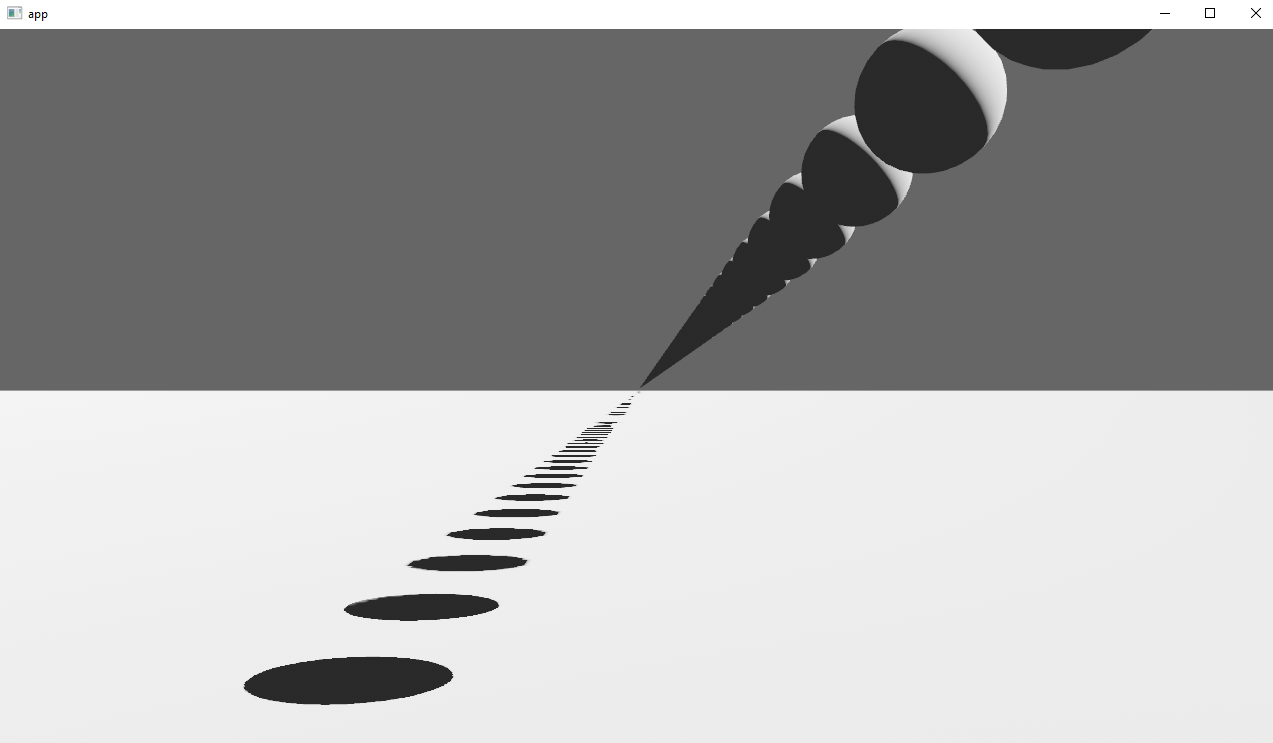
## Solution
Rather than rendering a single shadow map for directional light, the view frustum is divided into a series of cascades, each of which gets its own shadow map. The correct cascade is then sampled for shadow determination.
---
## Changelog
Directional lights now use cascaded shadow maps for improved shadow quality.
## Migration Guide
You no longer have to manually specify a `shadow_projection` for a directional light, and these settings should be removed. If customization of how cascaded shadow maps work is desired, modify the `CascadeShadowConfig` component instead.
# Objective
Shadows are broken on many_foxes on AMD GPUs. This seems to be due to rounding or floating point precision issues combined with the absolute unit of a plane that it's currently using.
Related: https://github.com/bevyengine/bevy/issues/6542
I'm not sure if we want to close that issue, as there's still the underlying issue of shadows breaking on overly large planes.
## Solution
Make the plane smaller.
# Objective
On wasm, bevy applications currently prevent any of the normal browser hotkeys from working normally (Ctrl+R, F12, F5, Ctrl+F5, tab, etc.).
Some of those events you may want to override, perhaps you can hold the tab key for showing in-game stats?
However, if you want to make a well-behaved game, you probably don't want to needlessly prevent that behavior unless you have a good reason.
Secondary motivation: Also, consider the workaround presented here to get audio working: https://developer.chrome.com/blog/web-audio-autoplay/#moving-forward ; It won't work (for keydown events) if we stop event propagation.
## Solution
- Winit has a field that allows it to not stop event propagation, expose it on the window settings to allow the user to choose the desired behavior. Default to `true` for backwards compatibility.
---
## Changelog
- Added `Window::prevent_default_event_handling` . This allows bevy apps to not override default browser behavior on hotkeys like F5, F12, Ctrl+R etc.
# Objective
`RenderContext`, the core abstraction for running the render graph, currently only supports recording one `CommandBuffer` across the entire render graph. This means the entire buffer must be recorded sequentially, usually via the render graph itself. This prevents parallelization and forces users to only encode their commands in the render graph.
## Solution
Allow `RenderContext` to store a `Vec<CommandBuffer>` that it progressively appends to. By default, the context will not have a command encoder, but will create one as soon as either `begin_tracked_render_pass` or the `command_encoder` accesor is first called. `RenderContext::add_command_buffer` allows users to interrupt the current command encoder, flush it to the vec, append a user-provided `CommandBuffer` and reset the command encoder to start a new buffer. Users or the render graph will call `RenderContext::finish` to retrieve the series of buffers for submitting to the queue.
This allows users to encode their own `CommandBuffer`s outside of the render graph, potentially in different threads, and store them in components or resources.
Ideally, in the future, the core pipeline passes can run in `RenderStage::Render` systems and end up saving the completed command buffers to either `Commands` or a field in `RenderPhase`.
## Alternatives
The alternative is to use to use wgpu's `RenderBundle`s, which can achieve similar results; however it's not universally available (no OpenGL, WebGL, and DX11).
---
## Changelog
Added: `RenderContext::new`
Added: `RenderContext::add_command_buffer`
Added: `RenderContext::finish`
Changed: `RenderContext::render_device` is now private. Use the accessor `RenderContext::render_device()` instead.
Changed: `RenderContext::command_encoder` is now private. Use the accessor `RenderContext::command_encoder()` instead.
Changed: `RenderContext` now supports adding external `CommandBuffer`s for inclusion into the render graphs. These buffers can be encoded outside of the render graph (i.e. in a system).
## Migration Guide
`RenderContext`'s fields are now private. Use the accessors on `RenderContext` instead, and construct it with `RenderContext::new`.
# Objective
- This PR adds support for blend modes to the PBR `StandardMaterial`.
<img width="1392" alt="Screenshot 2022-11-18 at 20 00 56" src="https://user-images.githubusercontent.com/418473/202820627-0636219a-a1e5-437a-b08b-b08c6856bf9c.png">
<img width="1392" alt="Screenshot 2022-11-18 at 20 01 01" src="https://user-images.githubusercontent.com/418473/202820615-c8d43301-9a57-49c4-bd21-4ae343c3e9ec.png">
## Solution
- The existing `AlphaMode` enum is extended, adding three more modes: `AlphaMode::Premultiplied`, `AlphaMode::Add` and `AlphaMode::Multiply`;
- All new modes are rendered in the existing `Transparent3d` phase;
- The existing mesh flags for alpha mode are reorganized for a more compact/efficient representation, and new values are added;
- `MeshPipelineKey::TRANSPARENT_MAIN_PASS` is refactored into `MeshPipelineKey::BLEND_BITS`.
- `AlphaMode::Opaque` and `AlphaMode::Mask(f32)` share a single opaque pipeline key: `MeshPipelineKey::BLEND_OPAQUE`;
- `Blend`, `Premultiplied` and `Add` share a single premultiplied alpha pipeline key, `MeshPipelineKey::BLEND_PREMULTIPLIED_ALPHA`. In the shader, color values are premultiplied accordingly (or not) depending on the blend mode to produce the three different results after PBR/tone mapping/dithering;
- `Multiply` uses its own independent pipeline key, `MeshPipelineKey::BLEND_MULTIPLY`;
- Example and documentation are provided.
---
## Changelog
### Added
- Added support for additive and multiplicative blend modes in the PBR `StandardMaterial`, via `AlphaMode::Add` and `AlphaMode::Multiply`;
- Added support for premultiplied alpha in the PBR `StandardMaterial`, via `AlphaMode::Premultiplied`;
# Objective
Currently, Text always uses the default linebreaking behaviour in glyph_brush_layout `BuiltInLineBreaker::Unicode` which breaks lines at word boundaries. However, glyph_brush_layout also supports breaking lines at any character by setting the linebreaker to `BuiltInLineBreaker::AnyChar`. Having text wrap character-by-character instead of at word boundaries is desirable in some cases - consider that consoles/terminals usually wrap this way.
As a side note, the default Unicode linebreaker does not seem to handle emergency cases, where there is no word boundary on a line to break at. In that case, the text runs out of bounds. Issue #1867 shows an example of this.
## Solution
Basically just copies how TextAlignment is exposed, but for a new enum TextLineBreakBehaviour.
This PR exposes glyph_brush_layout's two simple linebreaking options (Unicode, AnyChar) to users of Text via the enum TextLineBreakBehaviour (which just translates those 2 aforementioned options), plus a method 'with_linebreak_behaviour' on Text and TextBundle.
## Changelog
Added `Text::with_linebreak_behaviour`
Added `TextBundle::with_linebreak_behaviour`
`TextPipeline::queue_text` and `GlyphBrush::compute_glyphs` now need a TextLineBreakBehaviour argument, in order to pass through the new field.
Modified the `text2d` example to show both linebreaking behaviours.
## Example
Here's what the modified example looks like
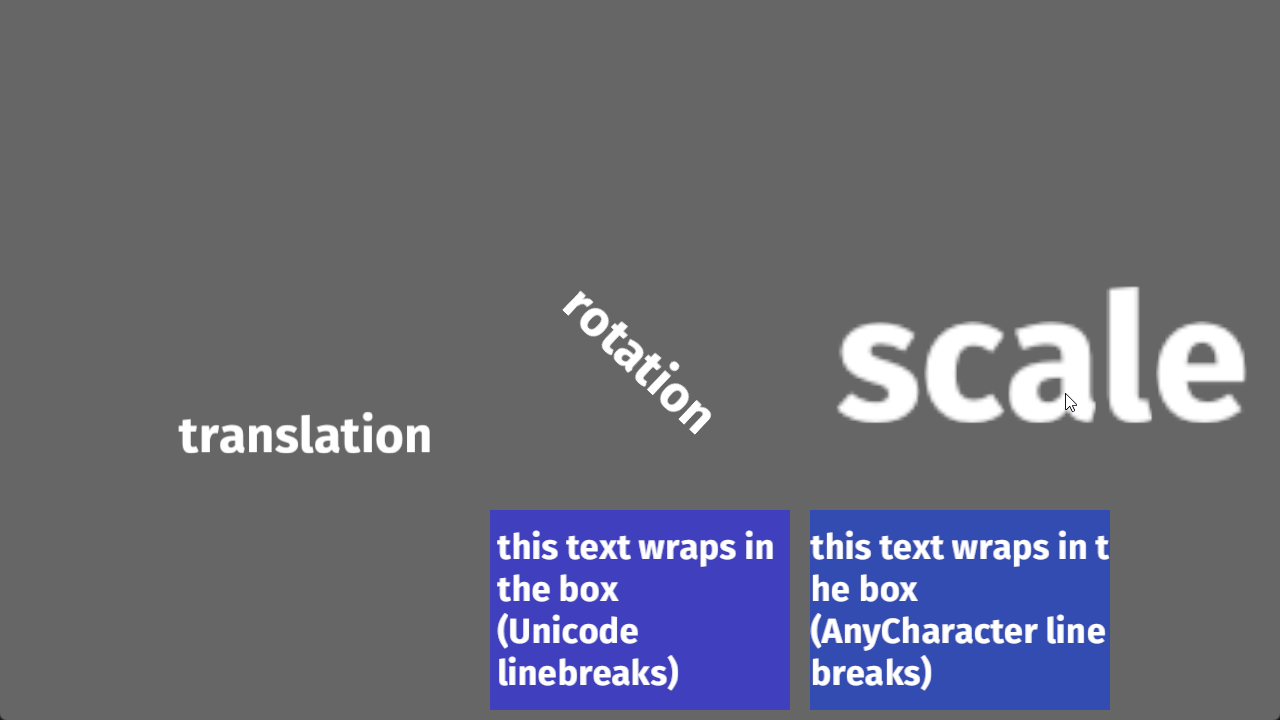
# Objective
- Fixes#7294
## Solution
- Do not trigger change detection when setting the cursor position from winit
When moving the cursor continuously, Winit sends events:
- CursorMoved(0)
- CursorMoved(1)
- => start of Bevy schedule execution
- CursorMoved(2)
- CursorMoved(3)
- <= End of Bevy schedule execution
if Bevy schedule runs after the event 1, events 2 and 3 would happen during the execution but would be read only on the next system run. During the execution, the system would detect a change on cursor position, and send back an order to winit to move it back to 1, so event 2 and 3 would be ignored. By bypassing change detection when setting the cursor from winit event, it doesn't trigger sending back that change to winit out of order.
# Objective
- The changes to the MeshPipeline done for the prepass broke the shader_instancing example. The issue is that the view_layout changes based on if MSAA is enabled or not, but the example hardcoded the view_layout.
## Solution
- Don't overwrite the bind_group_layout of the descriptor since the MeshPipeline already takes care of this in the specialize function.
Closes https://github.com/bevyengine/bevy/issues/7285
# Objective
Fixes#6931
Continues #6954 by squashing `Msaa` to a flat enum
Helps out #7215
# Solution
```
pub enum Msaa {
Off = 1,
#[default]
Sample4 = 4,
}
```
# Changelog
- Modified
- `Msaa` is now enum
- Defaults to 4 samples
- Uses `.samples()` method to get the sample number as `u32`
# Migration Guide
```
let multi = Msaa { samples: 4 }
// is now
let multi = Msaa::Sample4
multi.samples
// is now
multi.samples()
```
Co-authored-by: Sjael <jakeobrien44@gmail.com>
# Objective
Fixes#3184. Fixes#6640. Fixes#4798. Using `Query::par_for_each(_mut)` currently requires a `batch_size` parameter, which affects how it chunks up large archetypes and tables into smaller chunks to run in parallel. Tuning this value is difficult, as the performance characteristics entirely depends on the state of the `World` it's being run on. Typically, users will just use a flat constant and just tune it by hand until it performs well in some benchmarks. However, this is both error prone and risks overfitting the tuning on that benchmark.
This PR proposes a naive automatic batch-size computation based on the current state of the `World`.
## Background
`Query::par_for_each(_mut)` schedules a new Task for every archetype or table that it matches. Archetypes/tables larger than the batch size are chunked into smaller tasks. Assuming every entity matched by the query has an identical workload, this makes the worst case scenario involve using a batch size equal to the size of the largest matched archetype or table. Conversely, a batch size of `max {archetype, table} size / thread count * COUNT_PER_THREAD` is likely the sweetspot where the overhead of scheduling tasks is minimized, at least not without grouping small archetypes/tables together.
There is also likely a strict minimum batch size below which the overhead of scheduling these tasks is heavier than running the entire thing single-threaded.
## Solution
- [x] Remove the `batch_size` from `Query(State)::par_for_each` and friends.
- [x] Add a check to compute `batch_size = max {archeytpe/table} size / thread count * COUNT_PER_THREAD`
- [x] ~~Panic if thread count is 0.~~ Defer to `for_each` if the thread count is 1 or less.
- [x] Early return if there is no matched table/archetype.
- [x] Add override option for users have queries that strongly violate the initial assumption that all iterated entities have an equal workload.
---
## Changelog
Changed: `Query::par_for_each(_mut)` has been changed to `Query::par_iter(_mut)` and will now automatically try to produce a batch size for callers based on the current `World` state.
## Migration Guide
The `batch_size` parameter for `Query(State)::par_for_each(_mut)` has been removed. These calls will automatically compute a batch size for you. Remove these parameters from all calls to these functions.
Before:
```rust
fn parallel_system(query: Query<&MyComponent>) {
query.par_for_each(32, |comp| {
...
});
}
```
After:
```rust
fn parallel_system(query: Query<&MyComponent>) {
query.par_iter().for_each(|comp| {
...
});
}
```
Co-authored-by: Arnav Choubey <56453634+x-52@users.noreply.github.com>
Co-authored-by: Robert Swain <robert.swain@gmail.com>
Co-authored-by: François <mockersf@gmail.com>
Co-authored-by: Corey Farwell <coreyf@rwell.org>
Co-authored-by: Aevyrie <aevyrie@gmail.com>
# Objective
- Add a configurable prepass
- A depth prepass is useful for various shader effects and to reduce overdraw. It can be expansive depending on the scene so it's important to be able to disable it if you don't need any effects that uses it or don't suffer from excessive overdraw.
- The goal is to eventually use it for things like TAA, Ambient Occlusion, SSR and various other techniques that can benefit from having a prepass.
## Solution
The prepass node is inserted before the main pass. It runs for each `Camera3d` with a prepass component (`DepthPrepass`, `NormalPrepass`). The presence of one of those components is used to determine which textures are generated in the prepass. When any prepass is enabled, the depth buffer generated will be used by the main pass to reduce overdraw.
The prepass runs for each `Material` created with the `MaterialPlugin::prepass_enabled` option set to `true`. You can overload the shader used by the prepass by using `Material::prepass_vertex_shader()` and/or `Material::prepass_fragment_shader()`. It will also use the `Material::specialize()` for more advanced use cases. It is enabled by default on all materials.
The prepass works on opaque materials and materials using an alpha mask. Transparent materials are ignored.
The `StandardMaterial` overloads the prepass fragment shader to support alpha mask and normal maps.
---
## Changelog
- Add a new `PrepassNode` that runs before the main pass
- Add a `PrepassPlugin` to extract/prepare/queue the necessary data
- Add a `DepthPrepass` and `NormalPrepass` component to control which textures will be created by the prepass and available in later passes.
- Add a new `prepass_enabled` flag to the `MaterialPlugin` that will control if a material uses the prepass or not.
- Add a new `prepass_enabled` flag to the `PbrPlugin` to control if the StandardMaterial uses the prepass. Currently defaults to false.
- Add `Material::prepass_vertex_shader()` and `Material::prepass_fragment_shader()` to control the prepass from the `Material`
## Notes
In bevy's sample 3d scene, the performance is actually worse when enabling the prepass, but on more complex scenes the performance is generally better. I would like more testing on this, but @DGriffin91 has reported a very noticeable improvements in some scenes.
The prepass is also used by @JMS55 for TAA and GTAO
discord thread: <https://discord.com/channels/691052431525675048/1011624228627419187>
This PR was built on top of the work of multiple people
Co-Authored-By: @superdump
Co-Authored-By: @robtfm
Co-Authored-By: @JMS55
Co-authored-by: Charles <IceSentry@users.noreply.github.com>
Co-authored-by: JMS55 <47158642+JMS55@users.noreply.github.com>
# Objective
Fix https://github.com/bevyengine/bevy/issues/4530
- Make it easier to open/close/modify windows by setting them up as `Entity`s with a `Window` component.
- Make multiple windows very simple to set up. (just add a `Window` component to an entity and it should open)
## Solution
- Move all properties of window descriptor to ~components~ a component.
- Replace `WindowId` with `Entity`.
- ~Use change detection for components to update backend rather than events/commands. (The `CursorMoved`/`WindowResized`/... events are kept for user convenience.~
Check each field individually to see what we need to update, events are still kept for user convenience.
---
## Changelog
- `WindowDescriptor` renamed to `Window`.
- Width/height consolidated into a `WindowResolution` component.
- Requesting maximization/minimization is done on the [`Window::state`] field.
- `WindowId` is now `Entity`.
## Migration Guide
- Replace `WindowDescriptor` with `Window`.
- Change `width` and `height` fields in a `WindowResolution`, either by doing
```rust
WindowResolution::new(width, height) // Explicitly
// or using From<_> for tuples for convenience
(1920., 1080.).into()
```
- Replace any `WindowCommand` code to just modify the `Window`'s fields directly and creating/closing windows is now by spawning/despawning an entity with a `Window` component like so:
```rust
let window = commands.spawn(Window { ... }).id(); // open window
commands.entity(window).despawn(); // close window
```
## Unresolved
- ~How do we tell when a window is minimized by a user?~
~Currently using the `Resize(0, 0)` as an indicator of minimization.~
No longer attempting to tell given how finnicky this was across platforms, now the user can only request that a window be maximized/minimized.
## Future work
- Move `exit_on_close` functionality out from windowing and into app(?)
- https://github.com/bevyengine/bevy/issues/5621
- https://github.com/bevyengine/bevy/issues/7099
- https://github.com/bevyengine/bevy/issues/7098
Co-authored-by: Carter Anderson <mcanders1@gmail.com>
# Objective
See:
- https://github.com/bevyengine/bevy/issues/7067#issuecomment-1381982285
- (This does not fully close that issue in my opinion.)
- https://discord.com/channels/691052431525675048/1063454009769340989
## Solution
This merge request adds documentation:
1. Alert users to the fact that `App::run()` might never return and code placed after it might never be executed.
2. Makes `winit::WinitSettings::return_from_run` discoverable.
3. Better explains why `winit::WinitSettings::return_from_run` is discouraged and better links to up-stream docs. on that topic.
4. Adds notes to the `app/return_after_run.rs` example which otherwise promotes a feature that carries caveats.
Furthermore, w.r.t `winit::WinitSettings::return_from_run`:
- Broken links to `winit` docs are fixed.
- Links now point to BOTH `EventLoop::run()` and `EventLoopExtRunReturn::run_return()` which are the salient up-stream pages and make more sense, taken together.
- Collateral damage: "Supported platforms" heading; disambiguation of "run" → `App::run()`; links.
## Future Work
I deliberately structured the "`run()` might not return" section under `App::run()` to allow for alternative patterns (e.g. `AppExit` event, `WindowClosed` event) to be listed or mentioned, beneath it, in the future.
# Objective
Remove the `VerticalAlign` enum.
Text's alignment field should only affect the text's internal text alignment, not its position. The only way to control a `TextBundle`'s position and bounds should be through the manipulation of the constraints in the `Style` components of the nodes in the Bevy UI's layout tree.
`Text2dBundle` should have a separate `Anchor` component that sets its position relative to its transform.
Related issues: #676, #1490, #5502, #5513, #5834, #6717, #6724, #6741, #6748
## Changelog
* Changed `TextAlignment` into an enum with `Left`, `Center`, and `Right` variants.
* Removed the `HorizontalAlign` and `VerticalAlign` types.
* Added an `Anchor` component to `Text2dBundle`
* Added `Component` derive to `Anchor`
* Use `f32::INFINITY` instead of `f32::MAX` to represent unbounded text in Text2dBounds
## Migration Guide
The `alignment` field of `Text` now only affects the text's internal alignment.
### Change `TextAlignment` to TextAlignment` which is now an enum. Replace:
* `TextAlignment::TOP_LEFT`, `TextAlignment::CENTER_LEFT`, `TextAlignment::BOTTOM_LEFT` with `TextAlignment::Left`
* `TextAlignment::TOP_CENTER`, `TextAlignment::CENTER_LEFT`, `TextAlignment::BOTTOM_CENTER` with `TextAlignment::Center`
* `TextAlignment::TOP_RIGHT`, `TextAlignment::CENTER_RIGHT`, `TextAlignment::BOTTOM_RIGHT` with `TextAlignment::Right`
### Changes for `Text2dBundle`
`Text2dBundle` has a new field 'text_anchor' that takes an `Anchor` component that controls its position relative to its transform.
# Objective
- Fixes#6361
- Fixes#6362
- Fixes#6364
## Solution
- Added an example for creating a custom `Decodable` type
- Clarified the documentation on `Decodable`
- Added an `AddAudioSource` trait and implemented it for `App`
Co-authored-by: dis-da-moe <84386186+dis-da-moe@users.noreply.github.com>
# Objective
Add useful information about cursor position relative to a UI node. Fixes#7079.
## Solution
- Added a new `RelativeCursorPosition` component
---
## Changelog
- Added
- `RelativeCursorPosition`
- an example showcasing the new component
Co-authored-by: Dawid Piotrowski <41804418+Pietrek14@users.noreply.github.com>
# Objective
- Allow rendering queue systems to use a `Res<PipelineCache>` even for queueing up new rendering pipelines. This is part of unblocking parallel execution queue systems.
## Solution
- Make `PipelineCache` internally mutable w.r.t to queueing new pipelines. Pipelines are no longer immediately updated into the cache state, but rather queued into a Vec. The Vec of pending new pipelines is then later processed at the same time we actually create the queued pipelines on the GPU device.
---
## Changelog
`PipelineCache` no longer requires mutable access in order to queue render / compute pipelines.
## Migration Guide
* Most usages of `resource_mut::<PipelineCache>` and `ResMut<PipelineCache>` can be changed to `resource::<PipelineCache>` and `Res<PipelineCache>` as long as they don't use any methods requiring mutability - the only public method requiring it is `process_queue`.
# Objective
It is possible to manually update `GlobalTransform`.
The engine actually assumes this is not possible.
For example, `propagate_transform` does not update children
of an `Entity` which **`GlobalTransform`** changed,
leading to unexpected behaviors.
A `GlobalTransform` set by the user may also be blindly
overwritten by the propagation system.
## Solution
- Remove `translation_mut`
- Explain to users that they shouldn't manually update the `GlobalTransform`
- Remove `global_vs_local.rs` example, since it misleads users
in believing that it is a valid use-case to manually update the
`GlobalTransform`
---
## Changelog
- Remove `GlobalTransform::translation_mut`
## Migration Guide
`GlobalTransform::translation_mut` has been removed without alternative,
if you were relying on this, update the `Transform` instead. If the given entity
had children or parent, you may need to remove its parent to make its transform
independent (in which case the new `Commands::set_parent_in_place` and
`Commands::remove_parent_in_place` may be of interest)
Bevy may add in the future a way to toggle transform propagation on
an entity basis.
# Objective
- Remove redundant gamepad events
- Simplify consuming gamepad events.
- Refactor: Separate handling of gamepad events into multiple systems.
## Solution
- Removed `GamepadEventRaw`, and `GamepadEventType`.
- Added bespoke `GamepadConnectionEvent`, `GamepadAxisChangedEvent`, and `GamepadButtonChangedEvent`.
- Refactored `gamepad_event_system`.
- Added `gamepad_button_event_system`, `gamepad_axis_event_system`, and `gamepad_connection_system`, which update the `Input` and `Axis` resources using their corresponding event type.
Gamepad events are now handled in their own systems and have their own types.
This allows for querying for gamepad events without having to match on `GamepadEventType` and makes creating handlers for specific gamepad event types, like a `GamepadConnectionEvent` or `GamepadButtonChangedEvent` possible.
We remove `GamepadEventRaw` by filtering the gamepad events, using `GamepadSettings`, _at the source_, in `bevy_gilrs`. This way we can create `GamepadEvent`s directly and avoid creating `GamepadEventRaw` which do not pass the user defined filters.
We expose ordered `GamepadEvent`s and we can respond to individual gamepad event types.
## Migration Guide
- Replace `GamepadEvent` and `GamepadEventRaw` types with their specific gamepad event type.
# Objective
- Fixes https://github.com/bevyengine/bevy/discussions/6338
This PR allows for smooth transitions between different animations.
## Solution
- This PR uses very simple linear blending of animations.
- When starting a new animation, you can give it a duration, and throughout that duration, the previous and the new animation are being linearly blended, until only the new animation is running.
- I'm aware of https://github.com/bevyengine/rfcs/pull/49 and https://github.com/bevyengine/rfcs/pull/51, which are more complete solutions to this problem, but they seem still far from being implemented. Until they're ready, this PR allows for the most basic use case of blending, i.e. smoothly transitioning between different animations.
## Migration Guide
- no bc breaking changes
# Objective
- Fixes#7081.
## Solution
- Moved functionality from kitchen sink plugin `CorePlugin` to separate plugins, `TaskPoolPlugin`, `TypeRegistrationPlugin`, `FrameCountPlugin`. `TaskPoolOptions` resource should now be used with `TaskPoolPlugin`.
## Changelog
Minimal changes made (code kept in `bevy_core/lib.rs`).
## Migration Guide
- `CorePlugin` broken into separate plugins. If not using `DefaultPlugins` or `MinimalPlugins` `PluginGroup`s, the replacement for `CorePlugin` is now to add `TaskPoolPlugin`, `TypeRegistrationPlugin`, and `FrameCountPlugin` to the app.
## Notes
- Consistent with Bevy goal "modularity over deep integration" but the functionality of `TypeRegistrationPlugin` and `FrameCountPlugin` is weak (the code has to go somewhere, though!).
- No additional tests written.
# Objective
It is currently possible to break reference counting for assets by creating a strong `HandleUntyped` and then modifying the `id` field before dropping the handle. This should not be allowed.
## Solution
Change the `id` field visibility to private and add a getter instead. The same change was previously done for `Handle<T>` in #6176, but `HandleUntyped` was forgotten.
---
## Migration Guide
- Instead of directly accessing the ID of a `HandleUntyped` as `handle.id`, use the new getter `handle.id()`.
# Objective
- When using `Color::hex` for the first time, I was confused by the fact that I can't specify colors using #, which is much more familiar.
- In the code editor (if there is support) there is a preview of the color, which is very convenient.

## Solution
- Allow you to enter colors like `#ff33f2` and use the `.strip_prefix` method to delete the `#` character.
# Objective
Speed up the render phase of rendering. Simplify the trait structure for render commands.
## Solution
- Merge `EntityPhaseItem` into `PhaseItem` (`EntityPhaseItem::entity` -> `PhaseItem::entity`)
- Merge `EntityRenderCommand` into `RenderCommand`.
- Add two associated types to `RenderCommand`: `RenderCommand::ViewWorldQuery` and `RenderCommand::WorldQuery`.
- Use the new associated types to construct two `QueryStates`s for `RenderCommandState`.
- Hoist any `SQuery<T>` fetches in `EntityRenderCommand`s into the aformentioned two queries. Batch fetch them all at once.
## Performance
`main_opaque_pass_3d` is slightly faster on `many_foxes` (427.52us -> 401.15us)
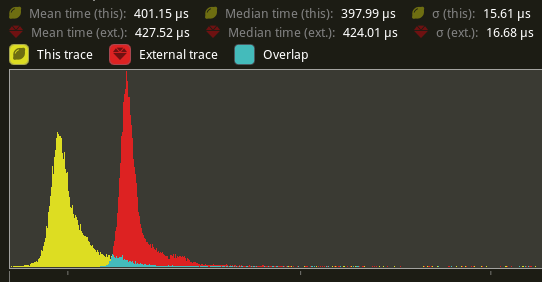
The shadow pass node is also slightly faster (344.52 -> 338.24us)
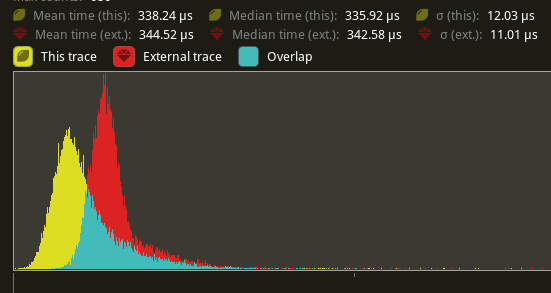
## Future Work
- Can we hoist the view level queries out of the core loop?
---
## Changelog
Added: `PhaseItem::entity`
Added: `RenderCommand::ViewWorldQuery` associated type.
Added: `RenderCommand::ItemorldQuery` associated type.
Added: `Draw<T>::prepare` optional trait function.
Removed: `EntityPhaseItem` trait
## Migration Guide
TODO
# Objective
Solve #5464
## Solution
Adds a `SystemInformationDiagnosticsPlugin` to add diagnostics.
Adds `Cargo.toml` flags to fix building on different platforms.
---
## Changelog
Adds `sysinfo` crate to `bevy-diagnostics`.
Changes in import order are due to clippy.
Co-authored-by: l1npengtul <35755164+l1npengtul@users.noreply.github.com>
Co-authored-by: IceSentry <c.giguere42@gmail.com>
# Objective
I am new to Bevy. And during my development, I noticed that the `iOS` example doesn't work.
Example panics with next message: ```panicked at 'Resource requested by bevy_ui::widget::text::text_system does not exist: bevy_asset::assets::Assets```.
I have asked for help in a `discord` iOS chat and there I receive a recommendation that it is possible that some bevy features missing.
## Solution
So, I used ```bevy``` with default features.
# Objective
Scene viewer mouse sensitivity/cursor usage isn't the best it could be atm, so just adding some quick, maybe opinionated, tweaks to make it feel more at home in usage.
## Solution
- Mouse delta shouldn't be affected by delta time, it should be more expected that if I move my mouse 1 inch to the right that it should move the in game camera/whatever is controlled the same regardless of FPS.
- Uses a magic number of 180.0 for a nice default sensitivity, modeled after Valorant's default sensitivity.
- Cursor now gets locked/hidden when rotating the camera to give it more of the effect that you are grabbing the camera.
# Objective
The documentation for camera priority is very confusing at the moment, it requires a bit of "double negative" kind of thinking.
# Solution
Flipping the wording on the documentation to reflect more common usecases like having an overlay camera and also renaming it to "order", since priority implies that it will override the other camera rather than have both run.
Consolidation of all the feedback about #6271 as well as the addition of an "unconditionally visible" mode.
# Objective
The current implementation of the `Visibility` struct simply wraps a boolean.. which seems like an odd pattern when rust has such nice enums that allow for more expression using pattern-matching.
Additionally as it stands Bevy only has two settings for visibility of an entity:
- "unconditionally hidden" `Visibility { is_visible: false }`,
- "inherit visibility from parent" `Visibility { is_visible: true }`
where a root level entity set to "inherit" is visible.
Note that given the behaviour, the current naming of the inner field is a little deceptive or unclear.
Using an enum for `Visibility` opens the door for adding an extra behaviour mode. This PR adds a new "unconditionally visible" mode, which causes an entity to be visible even if its Parent entity is hidden. There should not really be any performance cost to the addition of this new mode.
--
The recently added `toggle` method is removed in this PR, as its semantics could be confusing with 3 variants.
## Solution
Change the Visibility component into
```rust
enum Visibility {
Hidden, // unconditionally hidden
Visible, // unconditionally visible
Inherited, // inherit visibility from parent
}
```
---
## Changelog
### Changed
`Visibility` is now an enum
## Migration Guide
- evaluation of the `visibility.is_visible` field should now check for `visibility == Visibility::Inherited`.
- setting the `visibility.is_visible` field should now directly set the value: `*visibility = Visibility::Inherited`.
- usage of `Visibility::VISIBLE` or `Visibility::INVISIBLE` should now use `Visibility::Inherited` or `Visibility::Hidden` respectively.
- `ComputedVisibility::INVISIBLE` and `SpatialBundle::VISIBLE_IDENTITY` have been renamed to `ComputedVisibility::HIDDEN` and `SpatialBundle::INHERITED_IDENTITY` respectively.
Co-authored-by: Carter Anderson <mcanders1@gmail.com>
# Objective
This PR reorganizes majority of the scene viewer example into a module of plugins which then allows reuse of functionality among new or existing examples. In addition, this enables the scene viewer to be more succinct and showcase the distinct cases of camera control and scene control.
This work is to support future work in organization and future examples. A more complicated 3D scene example has been requested by the community (#6551) which requests functionality currently included in scene_viewer, but previously inaccessible. The future example can now just utilize the two plugins created here. The existing example [animated_fox example] can utilize the scene creation and animation control functionality of `SceneViewerPlugin`.
## Solution
- Created a `scene_viewer` module inside the `tools` example folder.
- Created two plugins: `SceneViewerPlugin` (gltf scene loading, animation control, camera tracking control, light control) and `CameraControllerPlugin` (controllable camera).
- Original `scene_viewer.rs` moved to `scene_viewer/main.rs` and now utilizes the two plugins.
# Objective
The `WgpuSettings` resource is only used during plugin build. Move it into the `RenderPlugin` struct.
Changing these settings requires re-initializing the render context, which is currently not supported.
If it is supported in the future it should probably be more explicit than changing a field on a resource, maybe something similar to the `CreateWindow` event.
## Migration Guide
```rust
// Before (0.9)
App::new()
.insert_resource(WgpuSettings { .. })
.add_plugins(DefaultPlugins)
// After (0.10)
App::new()
.add_plugins(DefaultPlugins.set(RenderPlugin {
wgpu_settings: WgpuSettings { .. },
}))
```
Co-authored-by: devil-ira <justthecooldude@gmail.com>
# Objective
This adds a custom profile for testing against stress tests. Bevy seemingly gets notably faster with LTO turned on. To more accurately depict production level performance, LTO and other rustc-level optimizations should be enabled when performance testing on stress tests.
Also updated the stress test docs to reflect that users should be using it.
# Objective
`AsBindGroup` can't be used as a trait object because of the constraint `Sized` and because of the associated function.
This is a problem for [`bevy_atmosphere`](https://github.com/JonahPlusPlus/bevy_atmosphere) because it needs to use a trait that depends on `AsBindGroup` as a trait object, for switching out different shaders at runtime. The current solution it employs is reimplementing the trait and derive macro into that trait, instead of constraining to `AsBindGroup`.
## Solution
Remove the `Sized` constraint from `AsBindGroup` and add the constraint `where Self: Sized` to the associated function `bind_group_layout`. Also change `PreparedBindGroup<T: AsBindGroup>` to `PreparedBindGroup<T>` and use it as `PreparedBindGroup<Self::Data>` instead of `PreparedBindGroup<Self>`.
This weakens the constraints, but increases the flexibility of `AsBindGroup`.
I'm not entirely sure why the `Sized` constraint was there, because it worked fine without it (maybe @cart wasn't aware of use cases for `AsBindGroup` as a trait object or this was just leftover from legacy code?).
---
## Changelog
- `AsBindGroup` can be used as a trait object.
# Objective
[Rust 1.66](https://blog.rust-lang.org/inside-rust/2022/12/12/1.66.0-prerelease.html) is coming in a few days, and bevy doesn't build with it.
Fix that.
## Solution
Replace output from a trybuild test, and fix a few new instances of `needless_borrow` and `unnecessary_cast` that are now caught.
## Note
Due to the trybuild test, this can't be merged until 1.66 is released.
# Objective
Change detection can be spuriously triggered by setting a field to the same value as before. As a result, a common pattern is to write:
```rust
if *foo != value {
*foo = value;
}
```
This is confusing to read, and heavy on boilerplate.
Adopted from #5373, but untangled and rebased to current `bevy/main`.
## Solution
1. Add a method to the `DetectChanges` trait that implements this boilerplate when the appropriate trait bounds are met.
2. Document this minor footgun, and point users to it.
## Changelog
* added the `set_if_neq` method to avoid triggering change detection when the new and previous values are equal. This will work on both components and resources.
## Migration Guide
If you are manually checking if a component or resource's value is equal to its new value before setting it to avoid triggering change detection, migrate to the clearer and more convenient `set_if_neq` method.
## Context
Related to #2363 as it avoids triggering change detection, but not a complete solution (as it still requires triggering it when real changes are made).
Co-authored-by: Zoey <Dessix@Dessix.net>
# Objective
The feature doesn't have any use case in libraries or applications and many users use this feature incorrectly. See the issue for details.
Closes#5753.
## Solution
Remove it.
---
## Changelog
### Removed
- `render` feature group.
## Migration Guide
Instead of using `render` feature group use dependencies directly. This group consisted of `bevy_core_pipeline`, `bevy_pbr`, `bevy_gltf`, `bevy_render`, `bevy_sprite`, `bevy_text` and `bevy_ui`. You probably want to check if you need all of them.
# Objective
- Fixes#6630, fixes#6679
- Improve scene viewer in cases where there are more than one scene in a gltf file
## Solution
- Can select which scene to display using `#SceneN`, defaults to scene 0 if not present
- Display the number of scenes available if there are more than one
# Objective
- Make running animation fluid skipping 'idle' frame.
## Solution
- Loop through the specified indices instead of through the whole sprite sheet.
The example is correct, is just the feeling that the animation loop is not seamless.
Based on the solution suggested by @mockersf in #5429.
# Objective
Adds a cylinder shape. Fixes#2282.
## Solution
- I added a custom cylinder shape, taken from [here](https://github.com/rparrett/typey_birb/blob/main/src/cylinder.rs) with permission from @rparrett.
- I also added the cylinder shape to the `3d_shapes` example scene.
---
## Changelog
- Added cylinder shape
Co-Authored-By: Rob Parrett <robparrett@gmail.com>
Co-Authored-By: davidhof <7483215+davidhof@users.noreply.github.com>
# Objective
Fixes#6224, add ``dbg``, ``info``, ``warn`` and ``error`` system piping adapter variants to expand #5776, which call the corresponding re-exported [bevy_log macros](https://docs.rs/bevy/latest/bevy/log/macro.info.html) when the result is an error.
## Solution
* Added ``dbg``, ``info``, ``warn`` and ``error`` system piping adapter variants to ``system_piping.rs``.
* Modified and added tests for these under examples in ``system_piping.rs``.
The PR fixes the interface of `EventReader::clear`. Currently, the method consumes the reader, which makes it unusable.
## Changelog
- `EventReader::clear` now takes a mutable reference instead of consuming the event reader.
## Migration Guide
`EventReader::clear` now takes a mutable reference instead of consuming the event reader. This means that `clear` now needs explicit mutable access to the reader variable, which previously could have been omitted in some cases:
```rust
// Old (0.9)
fn clear_events(reader: EventReader<SomeEvent>) {
reader.clear();
}
// New (0.10)
fn clear_events(mut reader: EventReader<SomeEvent>) {
reader.clear();
}
```
Co-authored-by: Carter Anderson <mcanders1@gmail.com>